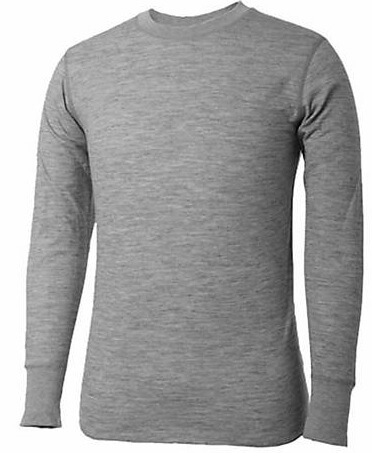In this article we are going to answer the question does merino wool keep you warm when wet.
The short answer to that question is yes as long as you don’t get the merino wool shirt or fabric too wet.
In this case, we tested an Icebreaker merino wool shirt. It’s 200 grams, roughly 7 ounces.
If you exceed about 1/3 or 35% of the weight of the fabric with water weight, you are exceeding the ability of merino wool shirt to keep you warm when wet.
Let me dive into the details of what that is.
I’ve got a glass full of water that represents roughly one-third the weight of the shirt in water. That’s actually quite a bit of water.
Merino wool does really an admirable job of keeping you warm when it does start to absorb moisture.
I’ve played around with this. I’ve tried numerous different merino wool shirts and saturated them with moisture to varying degrees just to see if I can realize the difference between them and some of the different synthetic shirts.
I can tell you that if you are putting less than 35 percent water into one of these merino shirts, you do feel warmer.
Beyond that and I can’t tell a difference between a merino wool shirt and synthetic shirt. The synthetic shirt is going to dry faster.
Let’s talk about how merino wool does that, how it can keep you warm when wet.
See Electric Heated Shirt, Battery Powered (Men’s & Women’s)
It does it in two ways.
First of all, when the merino fiber does get wet it becomes exothermic, meaning it can give off heat. I’ve tried to measure it and I have sophisticated enough tools or equipment to measure the amount of heat it gives off. It is measurable if you have the right equipment.
It’s a minimal amount of heat. Some people have tried to say but what about barns that burned down because they’ve got a pile of wool in them and there’s a hole in the roof and drops of water are dripping into that pile of wool.
My understanding is that’s a completely different phenomenon. That is an anaerobic microbial reaction that’s happening at the core of that pile of wool, generating the massive amounts of heat that allow it to combust and burn down the barn.
This is a different process and I don’t fully understand it. I’ve tried to read all the papers on it and I don’t understand what is actually happening in that merino fiber that allows it to generate heat. But like I said, it’s a minimal amount of heat and I don’t think that’s the primary value that the merino wool fiber has when it’s wet.
I think what’s more important is the hygroscopic nature of the merino fiber. The individual merino fiber on the exterior, or the epicuticle layer of it, is hydrophobic and on the interior of the fiber, it’s hydrophilic, meaning the exterior repels water, the interior absorbs water.
What’s happening is when you introduce water to a shirt made out of merino fibers, the water is being carried or transported through the center of that fiber, so it doesn’t feel wet when it’s next to skin and that’s why it has a limited capacity to carry that water and still remain warm while you’re wearing it.
You can test this yourself, it’s kind of interesting. Merino wool doesn’t absorb water or wick water like synthetics do. If you try and just introduce a measured amount of water to a merino shirt, it’s gonna come out looking kind of blotted, because it just won’t wick or absorb uniformly.
If you use water vapor making steam (I use a commercial steamer), then start applying steam to the shirt and continue to measure it until you add about 1/3 more weight to the shirt in water vapor and that’s how I’m playing around with testing these.
Like I said, if you get the shirt too wet, you’re gonna get that moisture next to your skin and you’re gonna get that convection cooling or evaporative cooling process going on and it’s going to be as miserable to wear as the synthetic is.

For over 12 years, I have been testing and reviewing heating technologies that overcome cold weather conditions. In recent years, I have specialized in the heated apparel. I’ve made it my mission to educate people about heated clothing.
